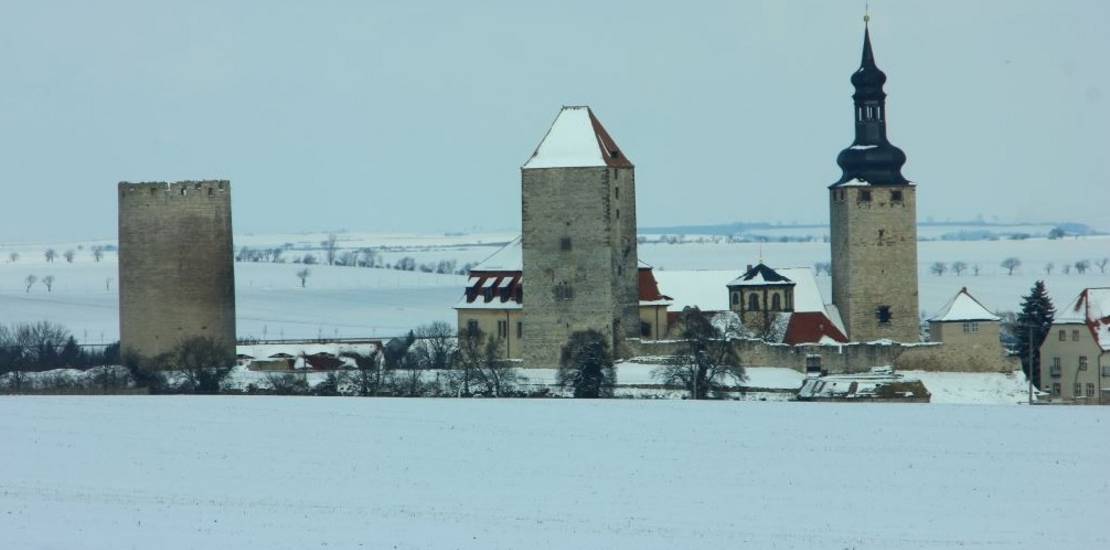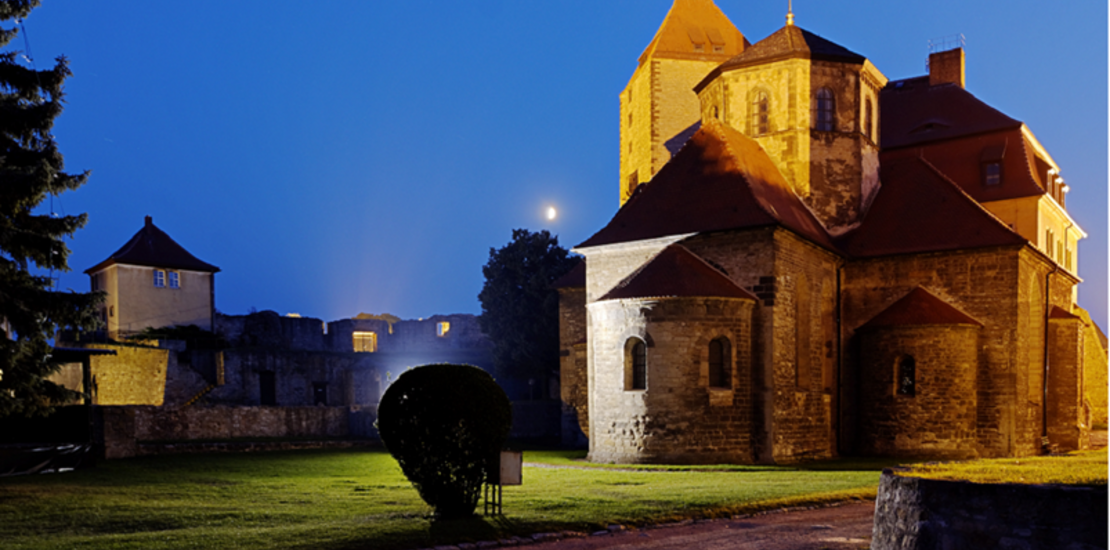More Than 1000 Years of History
Querfurt Castle through the Centuries
Querfurt Castle is one of the oldest and best-preserved medieval fortifications on the Romanesque Road. It covers a ground area of around 3,5 hectares, making it the largest castle in central Germany. In fact, the castle has an area almost seven times as large as that of the Wartburg (Thuringia). The majestic castle was first mentioned in the Hersfeld Tithe Register (866-899), a list of regions and castles the Imperial Duke Otto possessed. However, the Querfurt Castle’s origins can be traced much further back in history. From around the 10th century, the influential relatives of the Saxon emperors, the “noble lords of Querfurt” had their ancestral seat here. After the extinction of the main bloodline in 1496, the Castle came under the sway of the archbishopric of Magdeburg. In 1535, under Cardinal Albrecht, the corn house was erected using older buildings. It now houses the museum. Afterwards, its owners changed frequently from this point on. During the Thirty Years’ War, the Castle was scene to intense fighting. Between 1663 and 1815, Saxony-Querfurt was an imperial immediacy and served as a part-time residence for the Dukes of Saxony-Weissenfels until 1746, when it reverted to Saxony. In 1815, the Castle eventually fell into Prussian hands and became an agricultural domain. After the dissolution of the domain in 1936, the buildings were additionally used for administrative and residential purposes. Extensive scientific endeavors and excavations began on the castle’s grounds, which brought about interesting architectural findings between the 1930s and 1980s. Today, the impressive facility serves an administrative seat for the administrative district of Saalekreis, as well as a leisure and cultural destination for all visitors with its remarkable museum.











![Burg Luftbild [(c): © Hajo Dietz] Burg Luftbild [(c): © Hajo Dietz]](https://www.burg-querfurt.de/de/datei/zuschneiden/220x220/id/76,1125/burg_luftbild.jpg?0=picture)





